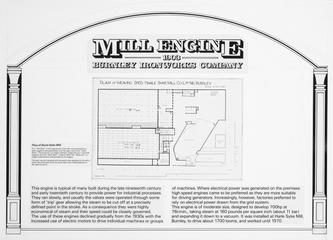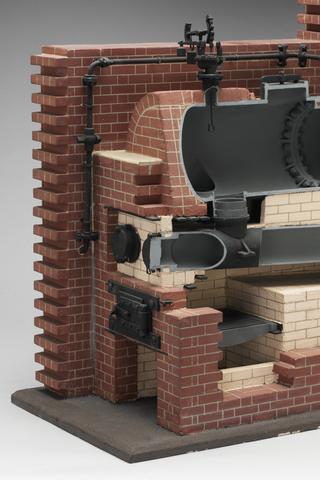
Brotherhood's three cylinder hydraulic engine, in section, on base, with a spare valve in section and spanner let into the wood.
Peter Brotherhood's three-cylinder hydraulic engine was the first really successful rotary hydraulic engine. It could run at high speeds and because of this it didn't need gearing to speed up the output, thus reducing losses due to friction in the transmission. Early attempts by William Armstrong at using hydraulic engines to drive workshop tools weren't successful. The Brotherhood engine was ideal for driving machine tools and was praised at the time of its introduction for its portability, adaptability, and potential for use in shipbuilding and 'special classes of work'. It was simple, reliable and easy to maintain. See RH Tweddell: 'On the application of water pressure to driving machinery' in Proc. Inst. Mech. Eng., 1874, pp.166-203.
This is a small motor on Brotherhood's system with three single-acting cylinders inclined at 120 deg. to one another, and having trunk pistons with cup-leather packing. The connecting rods are always under compression and are ball-jointed at the piston end, while at the other extremity they each embrace 90 deg. of the crankpin.
Details
- Category:
- Motive Power
- Object Number:
- 1888-390
- Measurements:
-
overall: 460 mm x 500 mm x 480 mm, ,
- type:
- hydraulic motors
- credit:
- Hydraulic Engineering Co. Ltd. (Chester)




